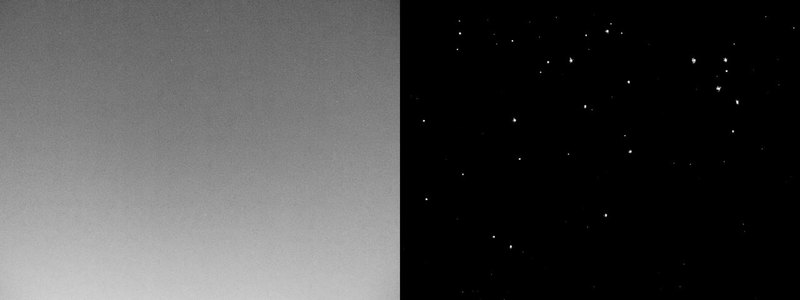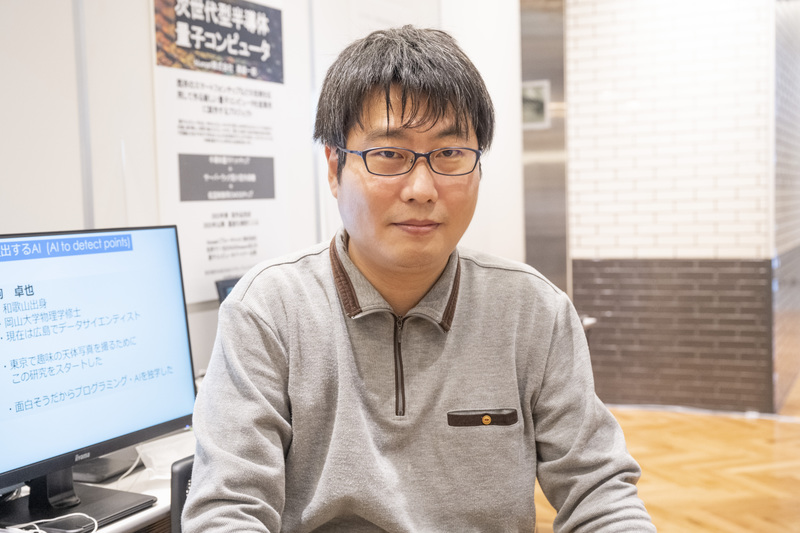Interviews

The AI Point-Detection System that Streamlines and Optimizes Imagery (Part 1)
Takuya Ikoma
In part 1, we spoke with Takuya Ikoma about his development process, from concept to application.
Interviewer & Japanese Writer: Yamamoto Takaya; Translation & Editing: Matthew Cherry
Takuya Ikoma’s AI Point-Detection System, which finds and draws out various “points” in the world, was selected for the 2019 INNO-vation Program’s Disruptive Challenge. The system detects minute details that are normally invisible or easy to miss with the human eye, such as cells in a microscope, stars in the night sky, or fishing boats and dams in satellite images. After detecting these points, it quickly processes the captured information into an image that’s easy to view.
Ikoma got his start in programming in college, where he majored in physics. Through self-study he quickly became fascinated with how exciting programming could be, and he created his own program that simulated object movement using the physics he had learned in his classes. He then carried this knowledge over into his hobby of stargazing, where he developed software that could revise and correct astrophotography.
After graduating college, he packed his bags and moved to Tokyo to find a job, but he soon discovered that the city lights made taking a clear picture of the night sky nearly impossible. That’s when Ikoma had the idea to put the AI he had developed in college to good use. He decided he would challenge himself to take clear pictures of the Tokyo night sky using as little equipment as possible and correct any imperfections via software.
Unfortunately, the AI couldn’t produce the images that Ikoma wanted using only publicly available data. Therefore, Ikoma prepared a large number of images from the same location in the sky and trained the AI to correct any imperfections using different methods, such as removing light pollution from the city, correcting for misalignments caused by diurnal motion, and overlaying multiple images with composite synthesis. By implementing deep neural networks, one of the learning methods for AI, Ikoma had created an original AI that could take vivid astrophotography even in the bustling city.
“I was really glad the first time I was able to take a picture of a magnitude 5 star in Tokyo,” Ikoma shared.

The AI can detect stars in pictures without clearly defined celestial bodies.
Ikoma originally submitted this system into the 2014 INNO-vation Program’s Disruptive Challenge as “AI for Astrophotography,” but it was not selected. Faced with rejection, Ikoma didn’t back down.
“At the time I thought that maybe an AI system that can take clear pictures of the Tokyo night sky might not have any real impact on society,” Ikoma recalled. “Even after submitting it into the INNO-vation Program, I did a lot of thinking about the system, and I came to realize that the system could not only detect stars, but cells as points on the screen as well. From then on, I looked beyond just detecting stars and started over with a point-detecting AI system.”
And with that, Ikoma’s AI Point-Detection System was created. He submitted his new proposal into the 2019 INNO-vation Program’s Disruptive challenge, only this time, he was selected.
In part 2, we’ll ask Ikoma directly about his development from the original “AI for Astrophotography” to the “AI Point-Detection System” developed for the INNO-vation Program.

Takuya Ikoma’s Profile

